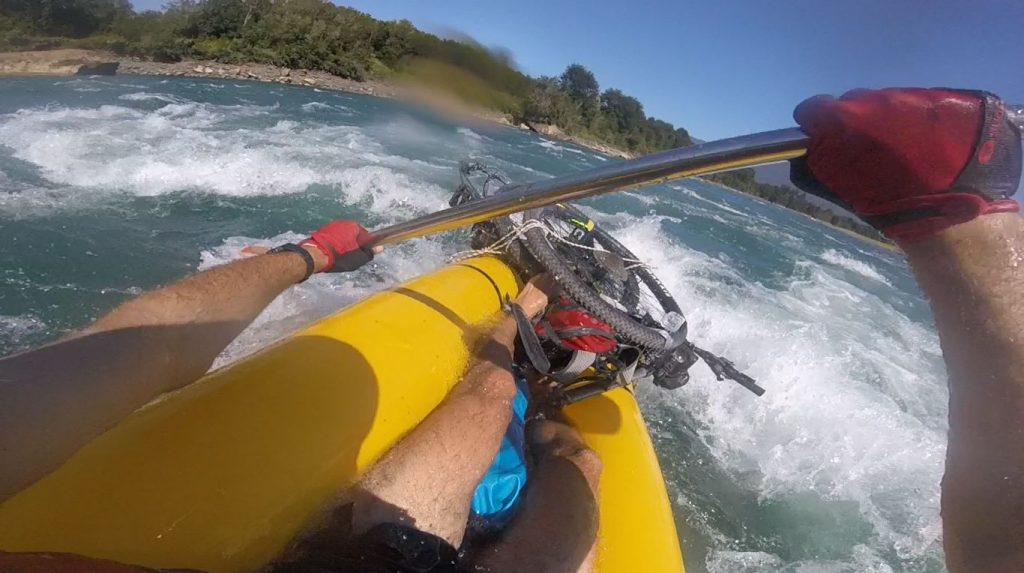
Bikerafting (carrying a packraft on a bicycle and then carrying the bicycle on the packraft) opens up new route possibilities and it’s also convenient for river runs because it eliminates the need for a long walk or vehicle shuttle.
All of the DIY Packraft models are suitable for bikerafting, but there are some things to consider when choosing a packraft for bikerafting.
Except for occasional bikerafting on relatively calm water, I wouldn’t recommend an Ultralight packraft because bicycles have some pretty pointy parts and you have to be extra careful when attaching your bike to an Ultralight packraft.
I haven’t tried bikerafting with a 2-Person packraft, but I wouldn’t recommend it for two people (there isn’t really enough room for two bikes), and it’s too big for one person.
Any of the standard weight single-person DIY Packrafts (such as the Skeena, Telkwa, and older models) work great for bikerafting. You may want to choose one of the larger sizes, however, so the bike won’t interfere with your paddle strokes.
When planning for bikerafting, also consider the following:
- You should pad areas where angular parts of the bike will rub against the packraft, and where parts of the bike will rub against each other.
- You’ll want a secure quick-release attachment method that works the same way every time (e.g. velcro straps, webbing clips, line-locks, etc.). Messing around with one long rope and a bunch of knots will waste a lot of time.
- The bike will take up nearly all the space on the bow, so if you plan to camp, you’ll probably want an airtight zipper in your packraft so you can store gear inside its tubes.
- It’s easier to paddle if the wheels and frame are stacked on top of each other instead of hanging way out over the water. Most modern bikes have quick-release wheels, but if yours doesn’t, swap the axles.
- Arrange your bike so it doesn’t interfere with your paddle stroke – this is easily overlooked on land, but becomes immediately apparent once you start paddling. As noted above, choosing a longer packraft makes this easier.
When it comes to securing the packraft, paddle, and PFD to a bicycle, most people use some combination of a rear rack and/or handlebar mount.
4 Comments
James Lumley · June 26, 2021 at 12:15 am
thank you this has helped a lot
Matt (Admin) · June 26, 2021 at 12:29 pm
You’re welcome!
AbMtnGuy · June 28, 2021 at 7:57 pm
Hi James. I’ve been bikerafting with a Telkwa (130 cm) for over a year, so far. The raft works very well with both mountain (29″) and fatbikes (27.5′). After much testing, my preference is to remove the front wheel and secure it to the custom D rings on the stern with a foam pad and a single Voile strap (32″) The rest of the bike sits on the forward tubes with the front fork extending beyond the bow. Both pedals stay on and a crank arm is strapped to to a chainstay to prevent movement and contact with the hull. I also have a DripDeck which prevents wear of the top of hull fabric and also keeps water out of the cockpit. I use a static-strap to secure the handlebar and fork at the “appropriate” position and, three Voile straps to secure the bike. As Matt mentioned the Ti-Zip makes this all possible. I’ve posted a few ideas here https://bikepackersfoundry.com/bikerafting-gear-list/ and here https://bikepackersfoundry.com/diy-packraft-construction-notes/ Cheers … Guy
Matt (Admin) · June 29, 2021 at 7:42 am
Great stuff! Thanks!